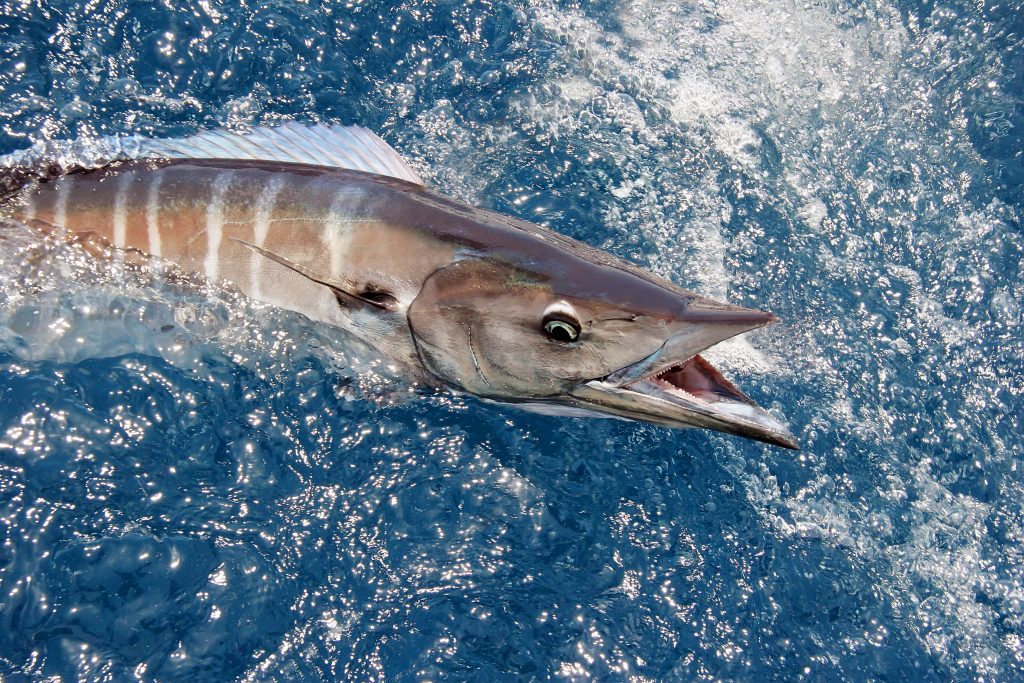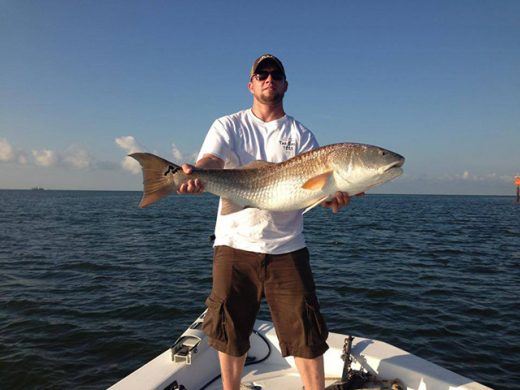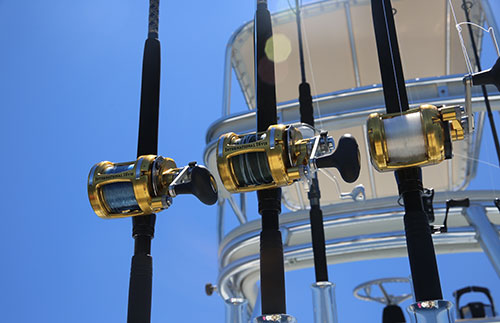Understanding the Wahoo……The Ocean Warrior
The line screams out 150 yards and then you encounter it. The vertical blue-white stripes identify one of God’s most unique creations—it’s the Wahoo. The cobalt waters of the Gulfstream could never be the same without her.
The Wahoo ( Acanthocybium Solandri) is the ultimate predator and one of the most beautiful and largest species stalking the Gulfstream off the Carolina’s. Their speed and hunting ability is unsurpassed. The Wahoo is a member of the Scombridae family which includes the mackerels and Tunas. Off the Carolina coast, these pelagics are prolific feeders desiring squid, frigate and bullet mackerel, flying fish, crustaceans and other protein bait also desired just like her other topwater competitors such as Billfish, Tuna, and Dolphin.
A mostly year-round presence in the Carolina’s, Wahoo are attracted to blue water habitat, live bottom, and Sargasso habitat. They share their presence with associated prey species seeking these same exact habitats. Most of the preferred water boundaries are found along the western wall of the gulf stream where meandering eddies and blue water filament bands are located along or near the 30 to 100-fathom break. During warmer water temperature seasons, the Wahoo work the water boundaries inshore of the stream. They will also hunt the live bottom terraces around 110 ft. depth, 90 foot, and even the 60 ft. terrace if water conditions are favorable. These mid-shelf live bottom terraces are found along the entire east coast continental shelf from south Florida to the north of Cape Lookout.
A few known facts about the Wahoo;
- Off the Carolina’s, Wahoo are most abundant in early spring through very late autumn. A few linger around in winter, but southern Florida’s abundant fishery takes place primarily in winter, showing the southern migratory preference during the Carolina winter period seeking warmer water and following prey migration. In summer, wahoo will migrate into the mid-Atlantic as well. Wahoo are sometimes schooling as youngsters and feeding on smaller crustaceans along weed lines but in maturity, they switch to feed on larger baits such as frigate and bullet mackerel and flying fish. They become more solitary as they age, often appearing as pairs and less schooling.
- Wahoo are fast-growing and reach sexual maturity quickly. A one-year old fish at 15 pounds will reach 35 pounds at the end of the 2nd So the 60 to 80-pound class fish is probably 3 to 5 years old which is generally about their life expectancy. The state record for Wahoo in NC is 150.0 lbs. caught out of Ocracoke inlet in 1994. The SC state record was landed out of Murrell’s Inlet in 1998 at 130.5 lbs. Georgia’s comes in at 123.3 lbs. caught out of Savannah in 2000 and lastly Florida’s state record is a whopping 202 lbs. off Palm Beach but was disqualified due to multiple anglers involved in the catch. This fish was an unofficial world record. The official record stands at 184 lbs.
- One satellite tagging study concluded these interesting facts ;
- Wahoo spends 45% of their time less than 65 feet below the ocean’s surface and 90% of their time in depths less than 650 feet. All fish spend their time in water temperatures between 63.5 degrees to 81.5, with an average of 74.0 degrees. This certainly demonstrates their affinity to hunt water mass boundaries at the surface where there is generally a change in water clarity and temperature change and perhaps the presence of Sargasso weed lines and grass matts. Their feeding behavior showed they conduct frequent dives from the surface to over 600 ft. of water on a regular and consistent basis. This shows the Wahoo’s desire to also hunt the ledges and live bottom along the continental shelf along the 30 to 100-fathom break.(picture 3—maps unique crop showing the 30-100 fathom break)








